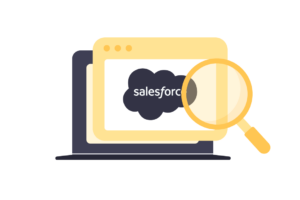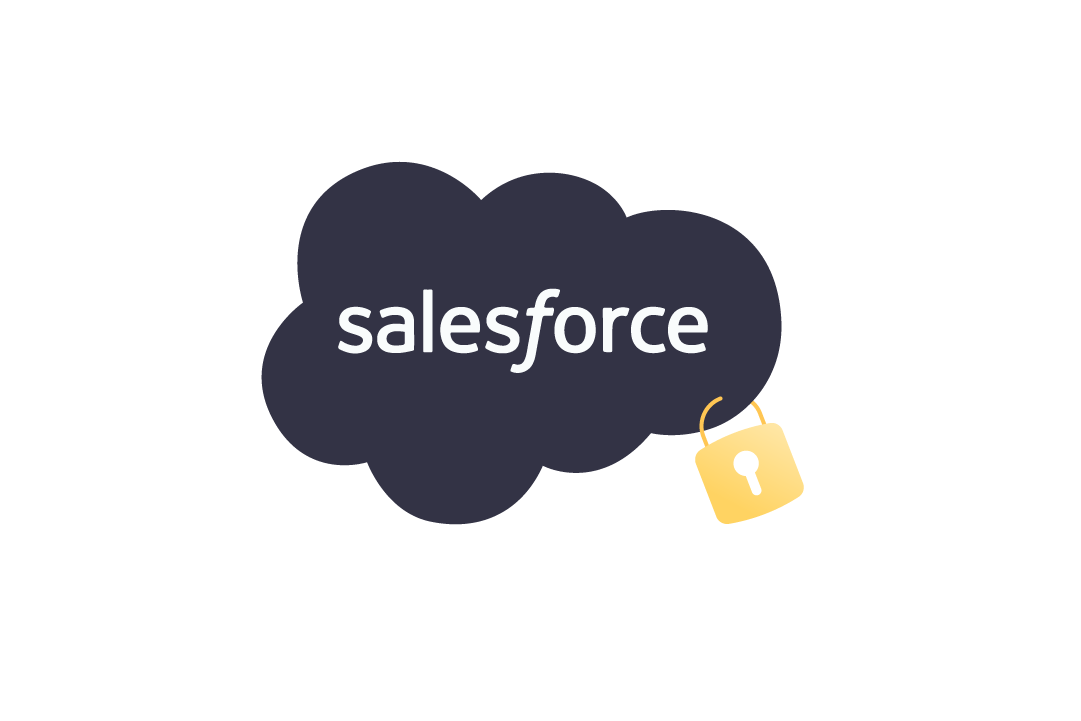Salesforce, renowned for its robust CRM capabilities, serves as a crucial repository for sensitive data. The wealth of information it holds is crucial for companies. It guides their decisions and customer interactions. However, this data needs to be protected. A breach on the platform can erode customer trust, cause substantial financial loss, and damage a company’s reputation.
Given that 74% of breaches stem from human factors, it’s essential to implement comprehensive security measures that address both technology and human behavior. This article discusses key practices for robust Salesforce security, focusing on strategies that mitigate vulnerabilities to protect your data effectively.
Getting Started with Salesforce Security
Salesforce security is a critical step in safeguarding your data and ensuring that your CRM operations are secure and efficient. The initial phase involves setting up and configuring your Salesforce instance with security in mind. This includes:
- Conducting a comprehensive security audit to assess current settings,
- Establishing user roles and profiles to control access levels,
- Implementing strong password policies alongside session timeout settings to prevent unauthorized access.
Furthermore, Salesforce offers several built-in tools to enhance security. The Security Health Check tool allows you to evaluate and improve your security settings based on Salesforce’s best practice recommendations. Multi-Factor Authentication (MFA) adds an extra layer of security, requiring users to verify their identity through multiple verification methods. Additionally, configuring Field Level Security and Record Access helps control the visibility and editability of specific fields and records within Salesforce. Regular monitoring of the Audit Trail is also essential, as it helps track changes made in your Salesforce setup, providing insights into potential security risks or policy violations.
Together, these steps and tools form a comprehensive approach to securing your Salesforce platform, ensuring that your sensitive data and customer interactions are protected against emerging threats.
Key Security Best Practices for Salesforce
In the Salesforce CRM landscape, ensuring top-tier security is not just beneficial, but essential. Here’s an expanded view of the best practices to secure your Salesforce platform:
1. Robust User Access Management
Establishing Role Hierarchy and Profiles. This involves creating a structured access system within Salesforce, where users are assigned specific roles and profiles. It ensures each user has access only to the data and functionalities necessary for their role, thus minimizing the risk of internal data breaches.
Utilizing Permission Sets. Permission sets are a flexible way to manage user access. They allow you to grant additional permissions to users without needing to modify their overall profiles, which can be particularly useful in complex organizational structures.
Enabling Multi-Factor Authentication (MFA). MFA adds an additional layer of security by requiring users to provide multiple forms of identification before accessing Salesforce. This drastically reduces the risk of unauthorized access, particularly from external threats.
2. Data Protection
Implementing Data Loss Prevention (DLP) Measures. DLP solutions like encryption and tokenization are critical for protecting sensitive data within Salesforce from unauthorized access and potential data leaks.
Monitoring and Auditing User Activity. It’s important to regularly review user activities within Salesforce. This helps in detecting any potential security risks and ensuring that user actions are in compliance with your organization’s security policies.
Security Health Check. Salesforce’s Security Health Check feature is a powerful tool for assessing your platform’s security settings. It helps identify potential vulnerabilities, allowing you to proactively address any security issues.

3. Securing Third-Party App Integrations
Vetting App Providers and Integrations. Before integrating a third-party app with Salesforce, it’s crucial to ensure that the app provider is committed to security standards and that their integration complies with your organization’s security policies.
Applying the Principle of Least Privilege. This principle involves granting third-party apps only the permissions they absolutely need to function, which reduces the risk of unauthorized access or data leakage.
Continuous Monitoring of Third-Party Apps. Regularly assess your third-party app integrations to ensure they maintain security standards and compliance with your organization’s policies.
4. Employee Trainspring
Promoting a Security-First Mindset. Cultivating a culture that prioritizes security within your organization is vital. This involves emphasizing the importance of protecting sensitive data and adhering to security policies.
Hands-On Training Sessions. Providing practical training to employees helps them understand how to effectively use Salesforce’s security features. This can be critical in preventing security breaches caused by user error.
5. Staying Informed on Salesforce Security Updates
Subscribing to Salesforce Security Alerts. Keeping abreast of the latest security updates and potential vulnerabilities is crucial for maintaining a secure environment.
Participating in Salesforce Community Forums. Engaging with the broader Salesforce community through forums and discussion groups is an excellent way to exchange knowledge, learn from others, and stay updated on the latest security practices.
By thoroughly implementing these practices, you can significantly enhance the security of your Salesforce platform, ensuring your organization’s data is well-protected and maintaining the trust of your customers.
Managing and Monitoring Access in Salesforce
Effective management and monitoring of access in Salesforce are critical for ensuring data security and maintaining efficient workflows. Here are comprehensive strategies and best practices for securely managing access:
1. Evaluating User Privileges
Permission Sets. These allow you to control user activities within Salesforce. By understanding the main jobs and tasks of your users, you can set up appropriate permission sets. If certain permissions are too risky, they can be removed and later reinstated if necessary. This ensures job functionality while maintaining security.
Principle of Least Privilege. Implementing this principle involves giving users only the access they need to perform their jobs. It’s safer to limit access rather than allowing broad capabilities. For example, if a user only needs to view data, they shouldn’t have the ability to modify it. This reduces the risk of damage if an account is compromised.
2. Access and Login Management
Trusted Login IPs. Restricting login locations using IP addresses enhances security. By setting specific “safe” IP ranges, only logins from these IPs will be allowed. Attempts from non-trusted IPs can be blocked or require additional verification, guarding against unauthorized access and phishing attacks.
Secure Connections. Ensuring a secure internet connection is vital. Regular use of VPNs and updating router settings, such as enabling encryption (WPA2 or WPA3) and keeping firmware updated, prevent unauthorized network access and protect data from external threats.
3. Profile and Role Assignment
Assign Accurate Profiles for Object Access. Profiles dictate user access to Salesforce objects. For instance, a SysAdmin profile has broad access compared to a standard user. Custom profiles can be created to provide fine-tuned access for different teams, ensuring users have access only to what they need.
Roles for Record Access. Roles should reflect your team’s real-life structure. Creating a role hierarchy helps organize users and manage record accessibility within teams. This hierarchy makes it easier to control who has access to specific records, aligning access with job functions and data security needs.
Organization-Wide Defaults and Sharing Rules. These settings are crucial for determining private and shared data among users. They are particularly useful in large teams where data security requirements vary. By setting these defaults and rules, you can effectively manage data accessibility and maintain data privacy.
Overview of Advanced Security Tools Offered by Salesforce

Salesforce offers a range of advanced security tools designed to provide comprehensive protection and management of your Salesforce environment. These tools cater to various aspects of security, from user access management to data encryption, ensuring a holistic security approach.
Health Check (Built-in)
The Health Check tool is integrated into Salesforce, allowing administrators to assess and optimize their organization’s security settings. It provides a summary score against a security baseline like the Salesforce Baseline Standard, helping admins configure settings for optimal security. This tool is particularly useful for maintaining security standards after Salesforce updates or changes within the organization.
Salesforce Optimizer
This built-in tool offers insights into more than 50 metrics, including aspects related to security like user permissions and storage. It helps identify potential problems in the Salesforce implementation, allowing for proactive management of security risks.
User Access and Permissions Assistant (Free on AppExchange)
Available on AppExchange, the user access and permissions assistant tool enhances permission management, allowing admins to analyze and report on permissions by user, set group, or dependency. It provides a comprehensive overview of user permissions, aiding in more effective and secure access management.
Security Center (Add-on)
Security Center is an add-on product that consolidates security information across all Salesforce orgs into one view, including other security feeds. It tracks key user permissions and org configuration metrics, offering a comprehensive overview of the security posture across the entire Salesforce environment. This tool is particularly valuable for larger organizations managing multiple orgs with enhanced security needs.
Salesforce Data Mask
The Salesforce Data Mask managed package is designed to secure sensitive data in sandbox orgs. It’s a crucial tool for organizations that want to ensure the safety of their data during development and testing phases.
Salesforce Backup Basics
Salesforce Backup is a feature aimed at meeting data compliance and security needs. It ensures that data is backed up and can be restored in case of loss or corruption, adding an additional layer of security to data management practices.
Secure Development Practices with Salesforce
Implementing secure development practices in Salesforce is crucial for protecting data and ensuring the integrity of applications. Here’s an overview of secure coding guidelines and strategies for developing secure web applications:
Secure Coding Guidelines
Implement Access Controls. Define roles, profiles, and permission sets to limit user access based on job responsibilities, ensuring only authorized users access sensitive data or critical functions.
Use Encryption. Utilize Salesforce’s encryption options, including field, platform, and transport-level encryption, to protect data in various states.
Sanitize Inputs. Validate and sanitize user inputs to prevent attacks like SQL injection and cross-site scripting (XSS). Use input masks, regular expressions, and validation rules to limit user input forms or patterns.
Avoid Hardcoding Sensitive Information. Store sensitive information such as passwords or API keys in protected custom settings or custom metadata types instead of hardcoding them in the code.
Use OAuth for Authentication. Implement OAuth for secure authentication, avoiding the storage of usernames and passwords in the code.
Limit Query and Search Results. Use filters, conditions, and limits in queries, and employ SOQL and SOSL injection prevention techniques to protect against data leakage and performance issues.
Implement Validation Rules. Create validation rules to ensure data entered by users meets specific criteria, thereby preventing errors and improving security.
Developing Secure Web Applications
Common Security Issues. Understand and address common web app security issues when building or integrating with the Salesforce Lightning Platform.
Salesforce Security Best Practices Salesforce offers developer security Trails to enhance the security of applications. These Trails provide guidance and best practices for building secure applications within the Salesforce ecosystem.
Conclusion
As we conclude, it’s clear that securing Salesforce requires a thoughtful approach. If you’re looking to strengthen your Salesforce security, consider partnering with ORIL Salesforce engineering services. Our expertise can guide you through the complexities of Salesforce security, ensuring your platform is both safe and optimally configured.






